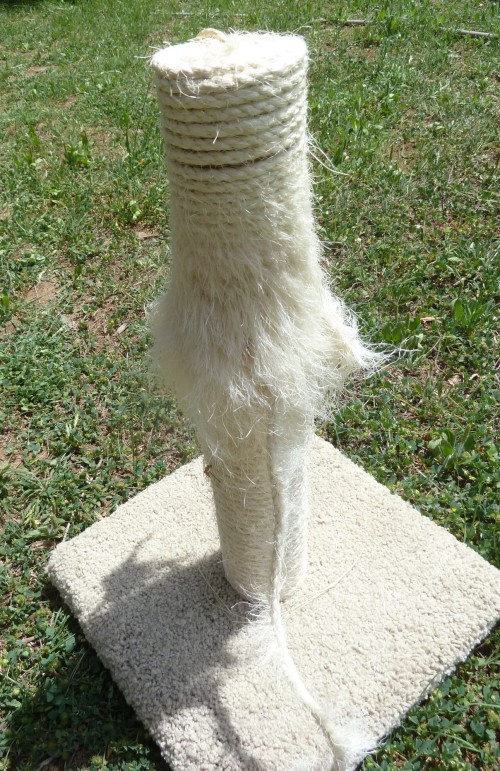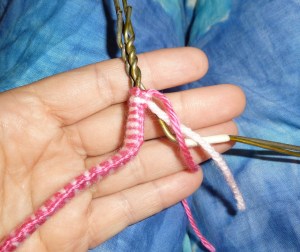I am really tired of throwing away good money on cat scratching posts that don’t hold up very long. I have thought about re-covering the old, tattered, worn out ones for way too long…. I finally decided to do something about it.
The two girls have been really good about using the cat scratching posts over the course of their 13 years, until recently. One of them has decided to use the corner of a chair, so I have four cat scratching posts in that area AND SHE STILL GOES TO THE CHAIR! There is another scratching post in our bedroom that she uses A LOT and that is the one you see in the photo. It is long overdue for a makeover!
Why would I want to take the time to re-cover these scratching posts?
- Frugal
- It is really easy to do
- Recycling some of the old (Yes I still had to buy the rope)
- I am tired of spending money on something that doesn’t last very long anymore. (Scratching posts used to cost $20 or less, now they are closer to $30+
Supplies I needed:
- Sisal rope
- wood glue
- blue painters tape or masking tape
I started by removing most of the older rope. I unwound the new sisal rope before I started so I wouldn’t be fighting with it as I needed it. Right away I could tell this was going to be a job that would go faster with three hand…. but I only have two. I applied glue to the round tube a little at a time. If I tried to glue a section, I just managed to get glue on my fingers and dripping off the tube, so i just glued enough to wrap the rope around once, hold it in place with my hand, then glue another ring.
When I would get a 6″ section done, I would then take the tape and go over it to help hold the rope in place until the glue dried. I am not sure I needed to tape the entire post, I could have used the tape every 3″ up the post and been fine I think. I will have to try that on the next post (I have a few more to do!)
I feel pretty good about how this project turned out. I fell better about being able to re-use most of the original scratching post and keep it out of the landfill. I also feel good about most of the supplies I used. I will take a bit more time to see if I can source some sisal rope made in the USA.
Have you taken on a project lately that has saved you money?
Sincerely, Emily








































